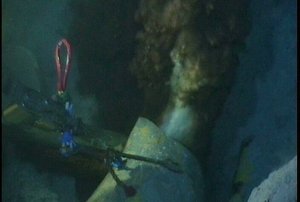At last, an official estimate of how much oil has been dumped into the Gulf of Mexico, though it isn’t pretty: 4.9 million barrels, or 205.8 million gallons. That makes the spill almost twenty times the size of the Exxon Valdez, according to a new total released last night.
New figures from the government flow rate team estimate that 62,000 barrels of oil gushed from the hole daily in the initial weeks of the spill, eventually slowing to 53,000 in later weeks. A portion of that flow—800,000 barrels—was captured via capping and siphoning. Some of it was also burned off or skimmed, but the vast majority ended up in the Gulf. (Even if you can’t see it because of all that dispersant the company also dumped in the water).
The 53,000 barrel figure toward the end of the spill lines up with BP’s own internal estimates, despite the fact that the company was publicly offering a much, much lower figure. At first the company said just 1,000 barrels a day was leaking from the well; BP later adopted the federal government’s initial (and woefully low) 5,000 barrel estimate.
Of course, BP had every reason to low-ball the figure. The updated estimate means that, at up to $4,300 per barrel, the company could now owe the federal government $21 billion fines for Clean Water Act violations alone. Factor in the fines for damage to natural resources and all the compensation to injured individuals and businesses in the region and you’re talking serious amounts of cash that BP can expect to shell out in the coming years.











